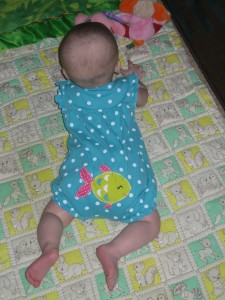A little over a year ago, I wrote this post about disaster preparedness, and set a goal for myself to get our family prepared. On this anniversary of the 1989 Loma Prieta earthquake, it seems as good a time as any to revisit the topic and evaluate my efforts. Plus, tomorrow is “The Great California Shake Out“. The program encourages Californians to participate in a “drop, cover, and hold on” drill at 10:18 am on 10/18, as well as practice what to do after the shaking stops and take steps to get prepared for an earthquake.
Sadly, I haven’t done as well as I had hoped and we still have a ways to go to be truly prepared. So it is with renewed vigor that I again share this information and discuss how we’ve prepared ourselves and where we could still use some work.
Disaster Plan:
- have at least two escape routes to exit your home We actually have three escape routes. However, they are all from the ground floor and if you are on the second floor the stairs are your only option. We should get some emergency window ladders before checking this one off.
- keep a pair of shoes and a flashlight under each bed in case you need to evacuate at night
- have two designated meeting areas, one near the house and one within walking distance in case the neighborhood is evacuated
- have an out-of-state emergency contact to let family/friends know your status (long distance lines are usually fixed faster than local lines)
- know the location of the gas main and other utilities and know how to turn them off I know where/how to shut the water off, but not the gas.
Some of these planning items are really simple and easy to do quickly, so there is no excuse for not having done them. In other words, I should get on that.
Household Safety:
- have fire extinguishers on each level of your home and know how to use them We have a fire extinguisher in the kitchen, but we don’t have one on the second floor. As for knowing how to use them . . . I know I’ve looked at the directions before, but it’s not like you can practice or anything to make sure you are doing it right! So I think that’s the best I can hope for.
make sure your smoke detectors (and as of July 1, 2011, CO detectors) are functioning and change the batteries every 6 months- make sure all heavy furniture, such as bookcases, hutches, or media centers, is properly secured to walls
don’t hang mirrors or heavy pictures/artwork above beds or sofas where they can fall on people; make sure all wall hangings are properly secured with a closed hook- secure books and knick-knacks on shelving with non-skid surface material or putty; store heavy items on low shelves
be sure your house number is visible from the street so emergency services can find you
Technically we haven’t done all these things. Some items are bolted to the wall, some are not. Some wall hangings are on closed hooks, some are not. But honestly, I look around the house at wall hangings and knick-knacks and such, and there is nothing that concerns me that would fall and hurt someone. This may not be the best way to think about it, but I think for us, finalizing our emergency plan and making sure we have all the survival items we need is more of a priority.
Disaster Kits:
water (1 gallon per person, per day) and non-perishable food items; can opener; plates, utensils, and cupsfirst aid kit We have a first aid kit in the house, one in the garage, and one in the trunk of my car.flashlight or battery operated lantern and extra batteries We have a lantern you wind with a hand crank.battery operated radio and extra batteries We have a solar/hand crank powered radio. - copies of important documents and phone numbers
- warm clothes/rain gear/hats
- blankets
- work gloves
- dust mask
- liquid bleach and an eye dropper (for water purification and sanitation)
- hygiene items (toilet paper, paper towels, moist towelettes, feminine products, hand sanitizer, soap, etc.)
- heavy duty plastic bags and a bucket (for waste and sanitation)
- emergency cash (including small bills and change)
I struggled with whether or not I should cross more items off this list. We actually have every single item on it, but the items are not all in one location in “kit” form, save for the ones I did cross off. We also haven’t prepared “go bags” in case we need to leave the area quickly. Since the whole point of having a kit is to have everything in one easy-access location (and we might not be able to get to items in certain areas of the house if there is major damage), we need to get duplicate items and put them in a centralized location.
I hope you all out there are more prepared than we are. If you are not, get to work! Take a look at my prior post for links that were helpful to me in learning about disaster preparedness. I also encourage you to check out shakeout.org, which has information about how to participate in the Great Shake Out in California and in other regions, as well as information about getting prepared for an earthquake.
© 2012 The Beehive All Rights Reserved

